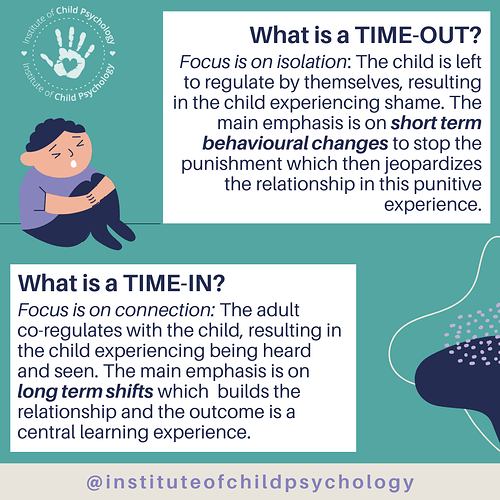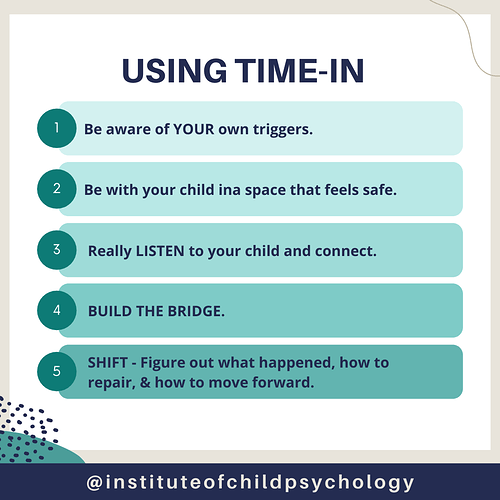TIME-OUTS: Focus is on isolation -> child is left to regulate by themselves -> child experiences shame -> emphasis is on short term behavioral changes to stop the punishment -> relationship is jeopardized in this punitive experience .
TIME-INS: Focus is on connection -> adult co-regulates with the child -> child experiences being heard and seen -> emphasis is on long term shifts -> relationship is central to this learning experience.
Here is an example of how to use a time in:
(1) The very first step is to be aware of your own triggers - what in your child’s behavior may be triggering you right now? What are your eyes “saying” to your child…what is your body saying? Take the pause…move your body, do what you need to do to calm your body and your response. It is impossible to regulate a child, if we are not regulated.
(2) Be with your child in a space that feels safe and neutral.
(3) Really LISTEN to your child. The focus needs to be on connection, connection, connection!
(4) Build the bridge: make sure your child has had time to fully calm their fight or flight response; then offer a hot chocolate, go for a walk, or sit quietly and build lego with them. We often rush to the next step - but learning cannot happen while a child is still in the alarm phases.
(5) Shift: This is when we work collaboratively with our child to figure out what happened, how to repair relationships that have been ruptured, and how to move forward with a growth focused perspective.


